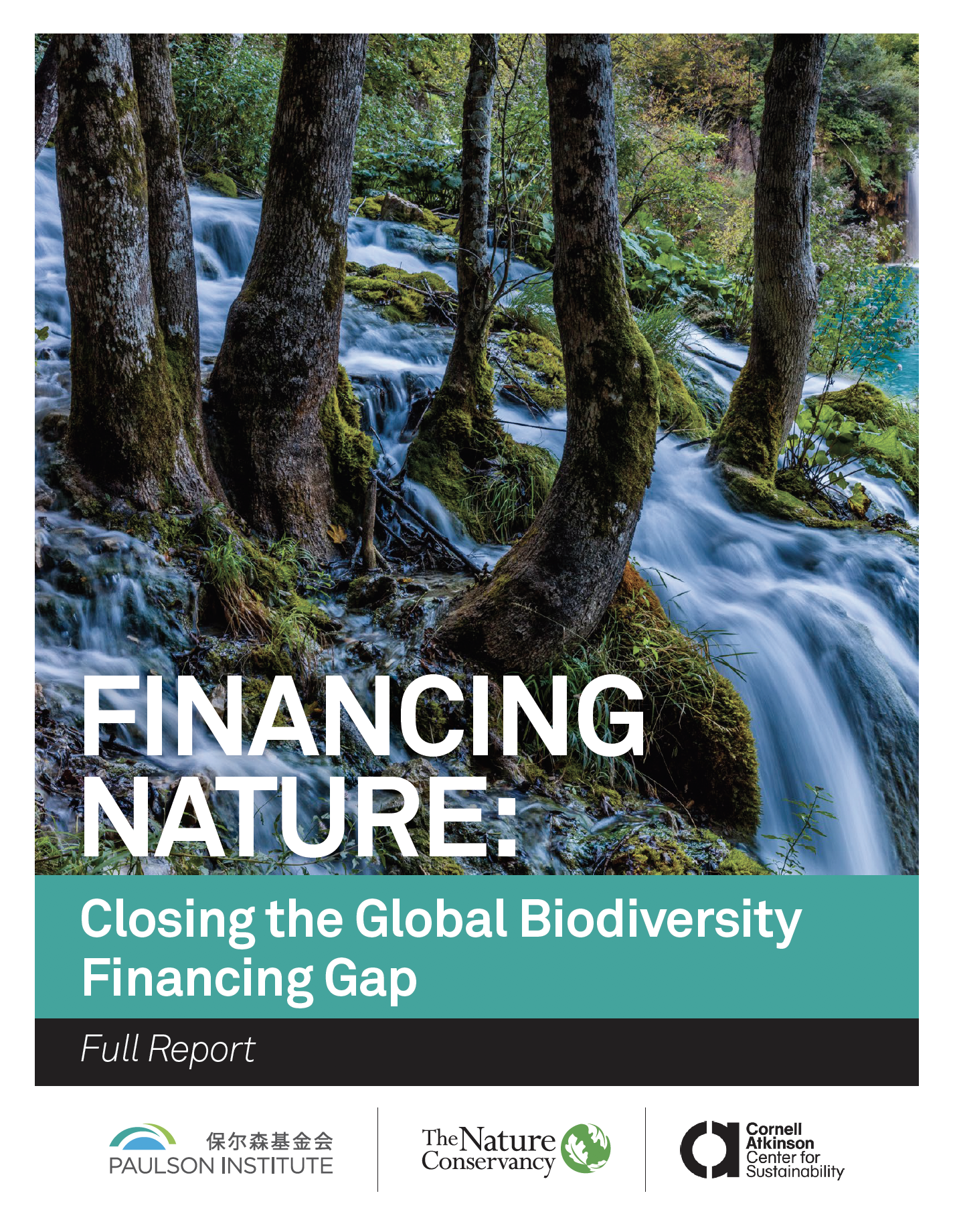
Biodiversity—the variety of all life on Earth—supports the health and wealth of our societies. But natural systems are under threat. To truly realize a future that’s durable for people and the planet, we need a swift transition to a nature-positive, carbon neutral world.
Quote: UN Secretary-General António Guterres
Making peace with nature is the defining task of the 21st century.
UN Secretary-General António Guterres
"The State of the Planet" Address, December 2, 2020
Protecting Nature Through Authentic Partnerships
Conservation for the coming decades must be based in authentic partnerships with Indigenous Peoples and local communities.

Building Better for Biodiversity—And Ourselves
Protecting nature is also vital for the health and well-being of people—and the loss of nature is not an inevitable result of human development.

Invest in Nature, and Nature Invests in Us
How we fund and transition to a nature-positive economy at land, water and sea.

Closing the Nature Funding Gap: A Finance Plan for the Planet
We need $700 billion to reverse the global biodiversity crisis—here’s how we get it

Biodiversity Action Guide
There’s no shortage of strategies available to create a nature-positive planet now—our downloadable guide shows how to translate ambition into action.

Building Momentum for Nature: Coalition Action
The Nature Now campaign supports a number of coalition efforts to raise the rallying cry for nature and climate and celebrate leadership across governments, the private sector and local communities.

COP16: What’s at stake for the 2024 UN Biodiversity Conference
This October, the race to protect Earth’s biodiversity is front and center as representatives from countries around the world gather in Colombia for the UN Biodiversity Conference, COP16.
Featured Content
Closing the Nature Funding Gap
In order to sufficiently fund the protection of nature, we need to know exactly how much we’re currently spending—and how much more is needed. In essence, we need to determine what our nature funding gap looks like. The Nature Conservancy, the Paulson Institute and the Cornell Atkinson Center for Sustainability took a deep look at these numbers as part of our new report, “Financing Nature: Closing the Global Biodiversity Financing Gap”.
Download
The Paulson Institute, TNC & the Cornell Atkinson Center for Sustainability reveal 9 critical actions to close the nature funding gap.
DOWNLOADFull Report available for download in English.
Forward & Executive Summary available for download in English, Spanish, Portuguese, and Bahasa Indonesia.
We all need nature, but we are exploiting it far more rapidly than it can renew itself—and that loss comes at a price.
The food we eat, the air we breathe, our health, our climate—essentially, everything that makes Earth inhabitable—all depends on the interplay of millions of organisms in diverse ecosystems, which have learned to thrive and interact over billions of years. Biodiversity underpins planetary health and informs everything down to the taste of a grain, the strand of a cloth and a sip of water, supporting our most basic needs. Nature loss is also accelerating the climate crisis. Yet, beyond areas well-stewarded by indigenous communities, nature and wildlife are declining around the world at an unprecedented rate. To reverse this trend, we must find better ways to manage humanity's footprint on land and sea—and new ways to fund this work.

Biodiversity: Nature by Another Name
Nature underpins every aspect of human existence—and it is in crisis
Governments and businesses now have an opportunity to take a critical, collective step to arrest this decline: to protect at least 30 percent of the world’s land, inland water and ocean.
The Kunming-Montreal Global Biodiversity Framework is the world’s roadmap for wildlife and habitat conservation, as well as updating countries’ goals for conservation and sustainable use of living resources.

30x30: 8 Steps to Protect the Best on Earth
To make the most of a '30 by 30' goal, here are our eight key takeaways.
We need an additional $700 billion a year to protect nature, according to a new report from the Paulson Institute, TNC and the Cornell Atkinson Center for Sustainability. The number sounds daunting, but the report also lays out a number of actions policymakers and businesses can take to start closing the nature funding gap.

Closing the Nature Funding Gap: A Finance Plan for the Planet
We need $700 billion to reverse the global biodiversity crisis—here’s how we get it

A Transformative Deal for Nature
A new Global Biodiversity Framework marks a turning point in how we manage our relationship to nature.
Very little of the planet is truly "untouched." If we are to preserve the diversity of all habitats on Earth, we have to protect and manage lightly or moderately changed areas, as well as pristine landscapes.
New maps help visualize the current state of land on earth and land that is threatened with future development pressures from energy, mining and infrastructure projects around the world. These visuals show that to truly save nature, the moderately modified places—where humans have left a mark but some wild land still exists—are just as critical to conserve as the last remaining pristine areas. Can we balance this growth and meet human needs while still conserving the nature on which all life depends?

Human Nature—Visualized
How do we balance development and conservation on a finite planet?

10 Steps to a Transformative Deal for Nature
Here were The Nature Conservancy’s top 10 recommendations to the CBD to create a new deal for nature.
When nature thrives, people thrive. But even when we acknowledge this truth on a planetary scale, it’s easy to lose sight of what that means to individual communities and individual people.
Even in the face of great challenges, people and nature find ways to thrive together. These nine stories of communities around the world—from Canada to Colombia and beyond—show how local leadership can have a global impact.

Nine Places Where People Are a Force for Nature
Local heroes across the globe remind us nature is personal, and show what leadership looks like in a world of change.

What You Can Do
People around the world are adding their voice to call for urgent action. Explore these other resources for more ways to engage with the Nature Now campaign.

Get More Nature Now
See our perspectives on the challenges we face and what we can do to reset our relationship with nature.
The 10-Point Plan for Financing Biodiversity
Implementation of the Global Biodiversity Framework
Resources for Download
- Mainstreaming for Nature: A Call to Action (.pdf)
- Steps to review and update NBSAPs (National Biodiversity Strategies and Action Plans) (.pdf)
- Pasos para revisar y actualizar las EPANDB (Estrategias y planes de acción nacionales en materia de diversidad biológica) (.pdf)
- Schematic Figure of Targets 1, 2, and 3 of the Global Biodiversity Framework (.pdf)
Indigenous Peoples and Local Communities
Resources for Download
- TNC Recommendations: Indigenous Peoples & Local Communities and '30x30' (.pdf)
- TNC Recommendations: Indigenous Peoples & Local Communities and Traditional Knowledge Policy Paper (.pdf)
- Indigenous Peoples & Local Communities and Resource Mobilization in the Global Biodiversity Framework (GBF) (.pdf)
- Views of TNC: Indigenous Peoples & Local Communities and the Global Biodiversity Framework (.pdf)
Policy & Science Content
Download the resources below for strategies and guidance on curbing biodiversity loss and stabilizing the climate.
-

Nature Now 2024
pdf
Throughout 2024, TNC engaged with partner governments to support implementation of the Global Biodiversity Framework. This report highlights how TNC continues to support the advancement of GBF targets and outlines key actions for the global community to accelerate progress in 2025. Download
DOWNLOAD -

Nature Now: TNC Activities to Implement the GBF
PDF
In December 2022, world leaders gathered for CBD COP15 and agreed to halt and reverse nature loss by 2030—the Global Biodiversity Framework (GBF). This report provides a brief snapshot highlighting how The Nature Conservancy (TNC) is supporting these efforts.
DOWNLOAD -
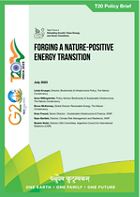
Forging a Nature-Positive Energy Transition, 2023
PDF
Rapid deployment of renewable energy (RE) is critical to meet rising energy needs & mitigate climate change. G20 policy guidance must ensure alignment with the Kunming-Montreal Global Biodiversity Framework, the Paris Agreement & SDGs to enable effective & green transition.
DOWNLOAD -

30x30 Coral Reef Restoration
PDF
This paper reviews the role of coral reef restoration in the context of climate change and global 30 by 30 targets, arguing that while restoration should not be used as a silver-bullet in the face of global declines, it has an important role to play to deliver social and ecological goals.
DOWNLOAD -

-
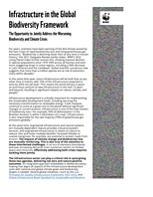
Infrastructure in the GBF
PDF
The infrastructure sector can play a critical role in jointly addressing the climate and biodiversity agendas, delivering net-zero and nature-positive outcomes.
DOWNLOAD -
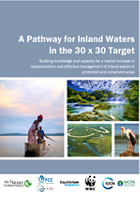
A Pathway for Inland Waters in the 30 x 30 Target
PDF
Building knowledge and capacity for a radical increase in representation and effective management of inland waters in protected and conserved areas.
DOWNLOAD -
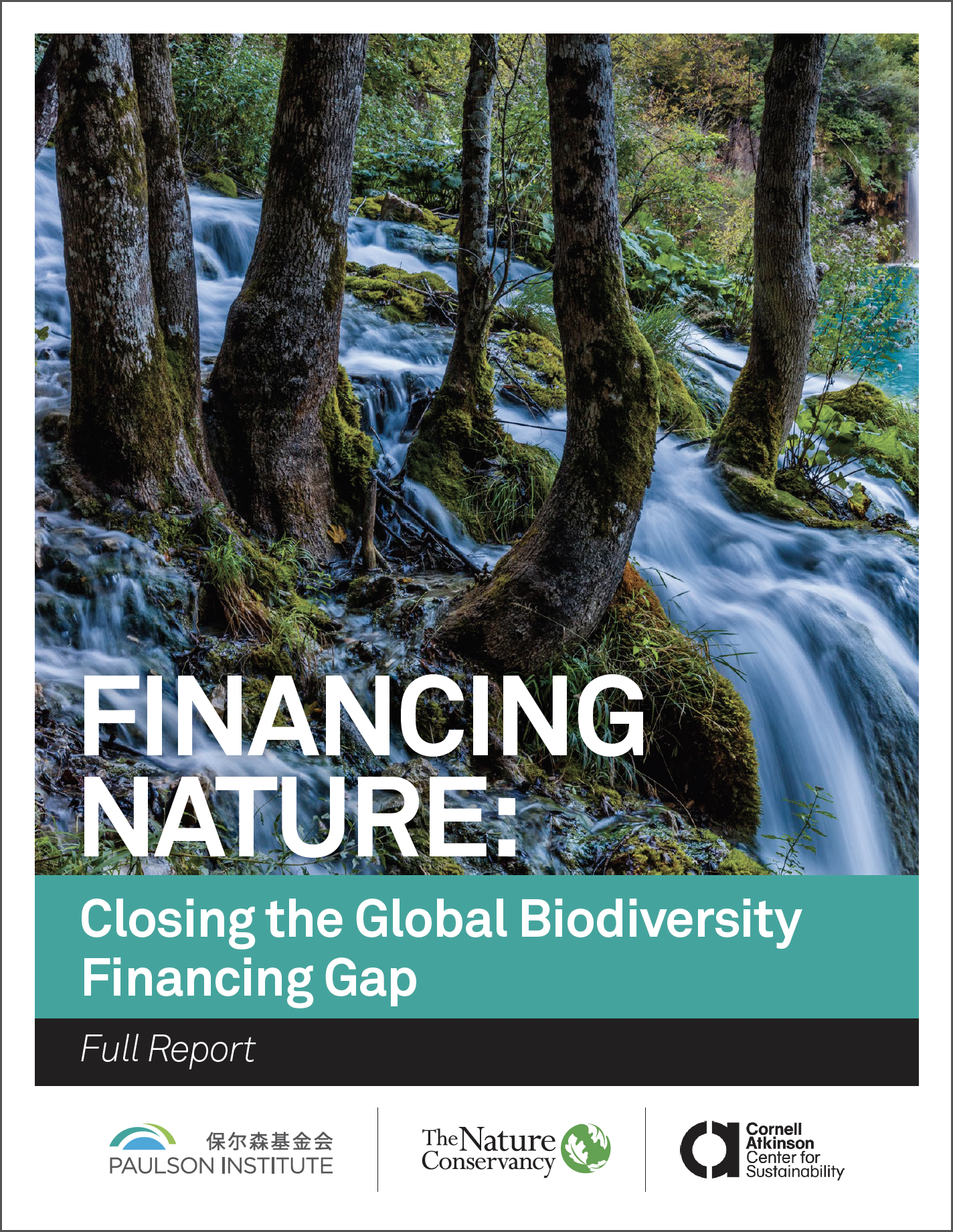
Report: Financing Nature
PDF
This report offers the most comprehensive assessment to date on how much the world currently spends to benefit nature, how much more we need to be spending, and how we can close that nature funding gap now. More information
DOWNLOAD -
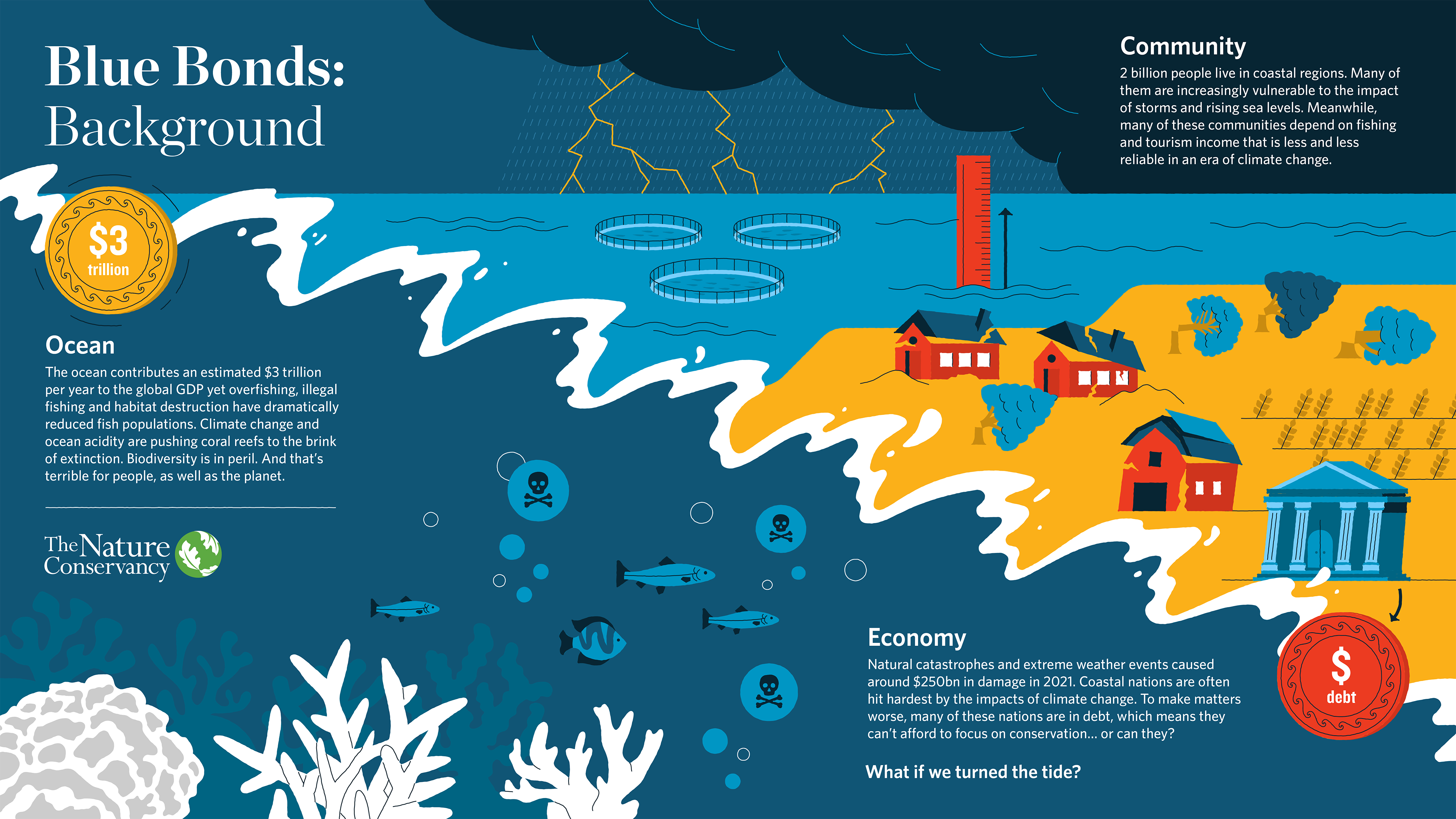
Infographic: Blue Bonds Explained
PDF
The Blue Bonds for Conservation model was developed to address the challenge of governments that rely on marine natural resources, who often experience high debt burdens, further limiting their ability to invest in such activities. More information
DOWNLOAD -
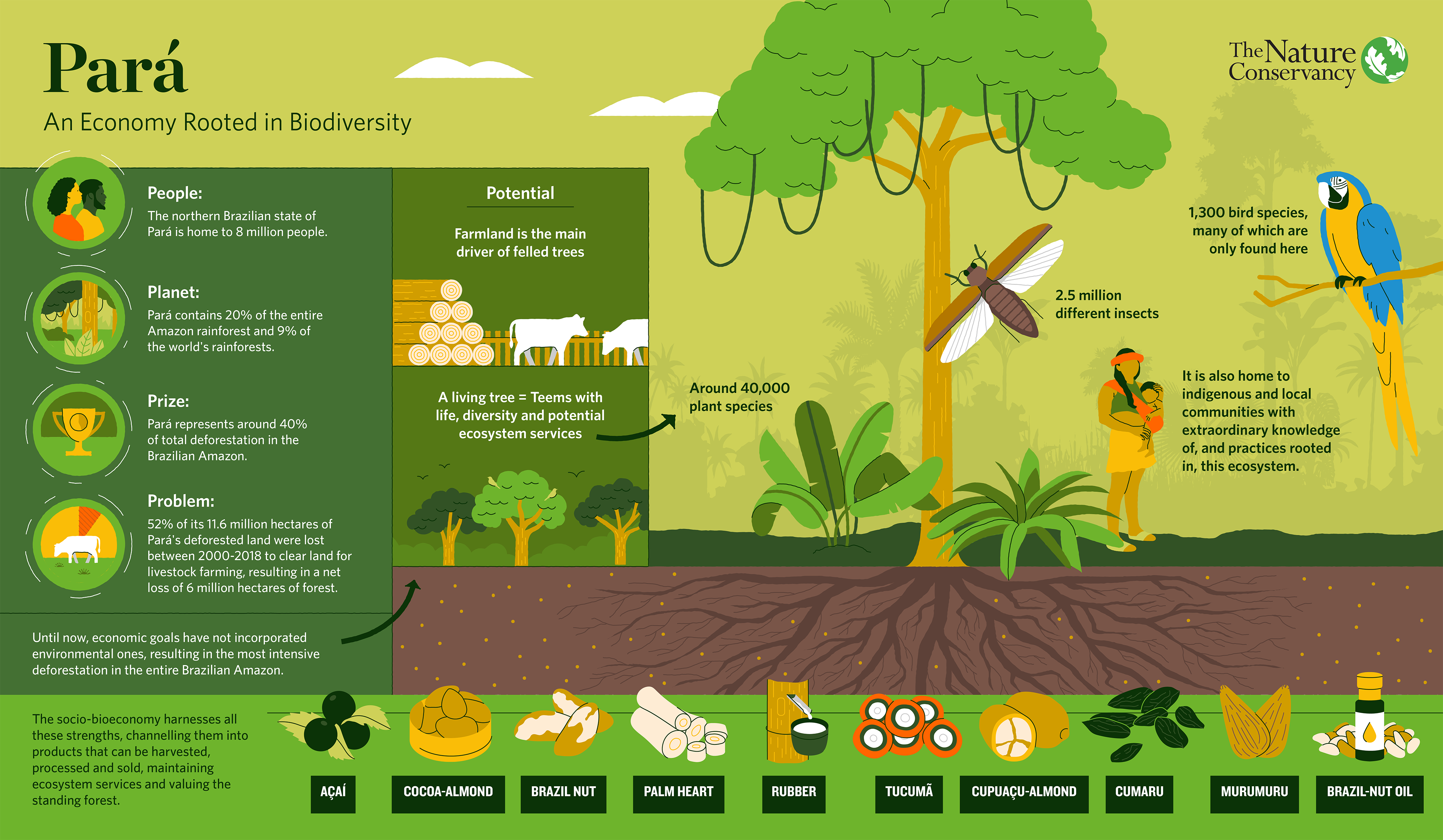
Infographic: Pará, Brazil's Socio-bioeconomy
PDF
This is the first study of the current and future whole value chain of biodiversity within a State to reveal the value of non-timber forest products, social biodiversity products, and the knowledge of local people. More information
DOWNLOAD -
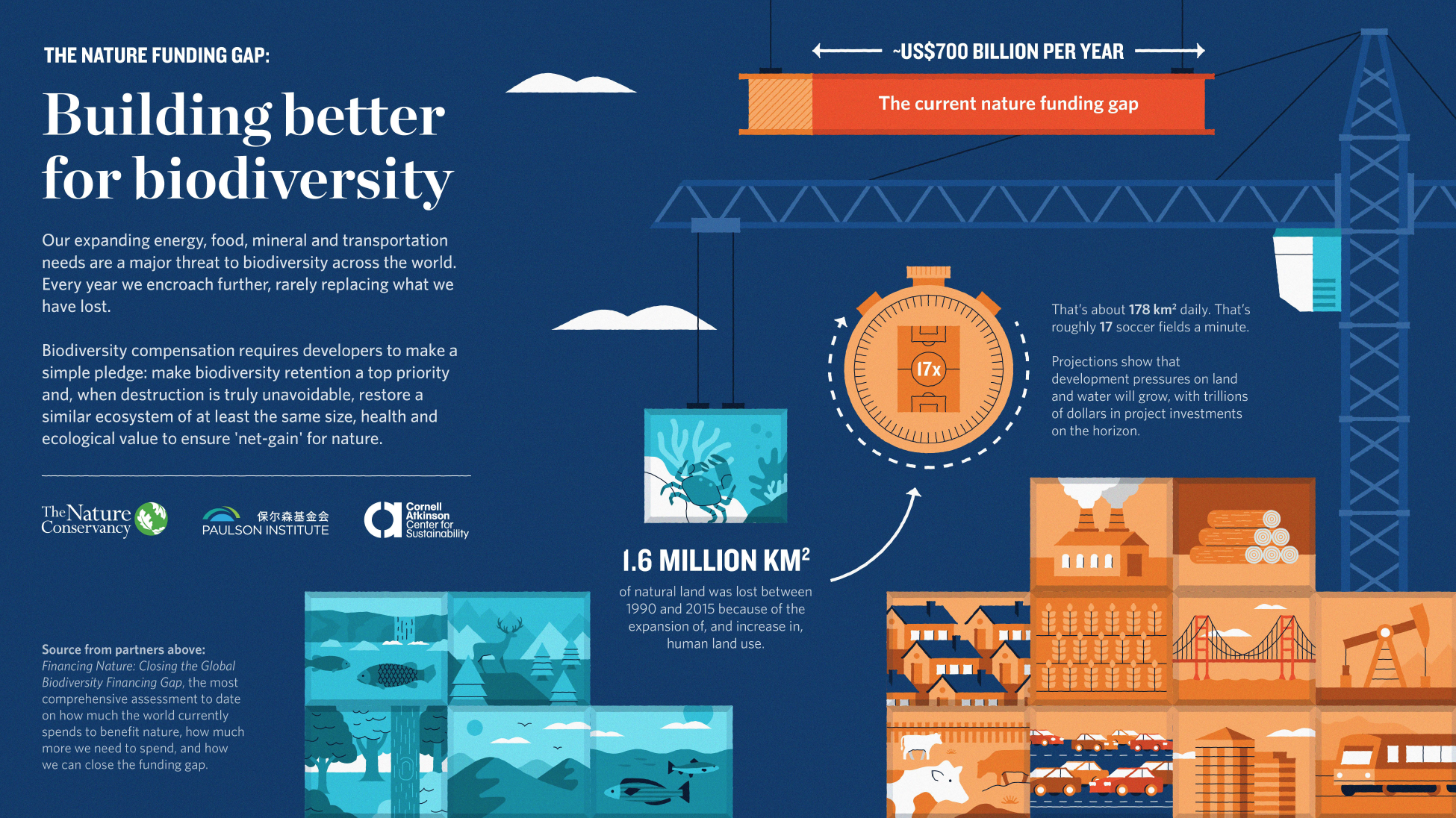
Infographic: Building Better for Biodiversity
PDF
Biodiversity compensation requires developers to make a simple pledge: make biodiversity retention a top priority, and when destruction is truly unavoidable, restore a similar ecosystem of at least the same size, health and ecological value to ensure 'net-gain' for nature. More information
DOWNLOAD -
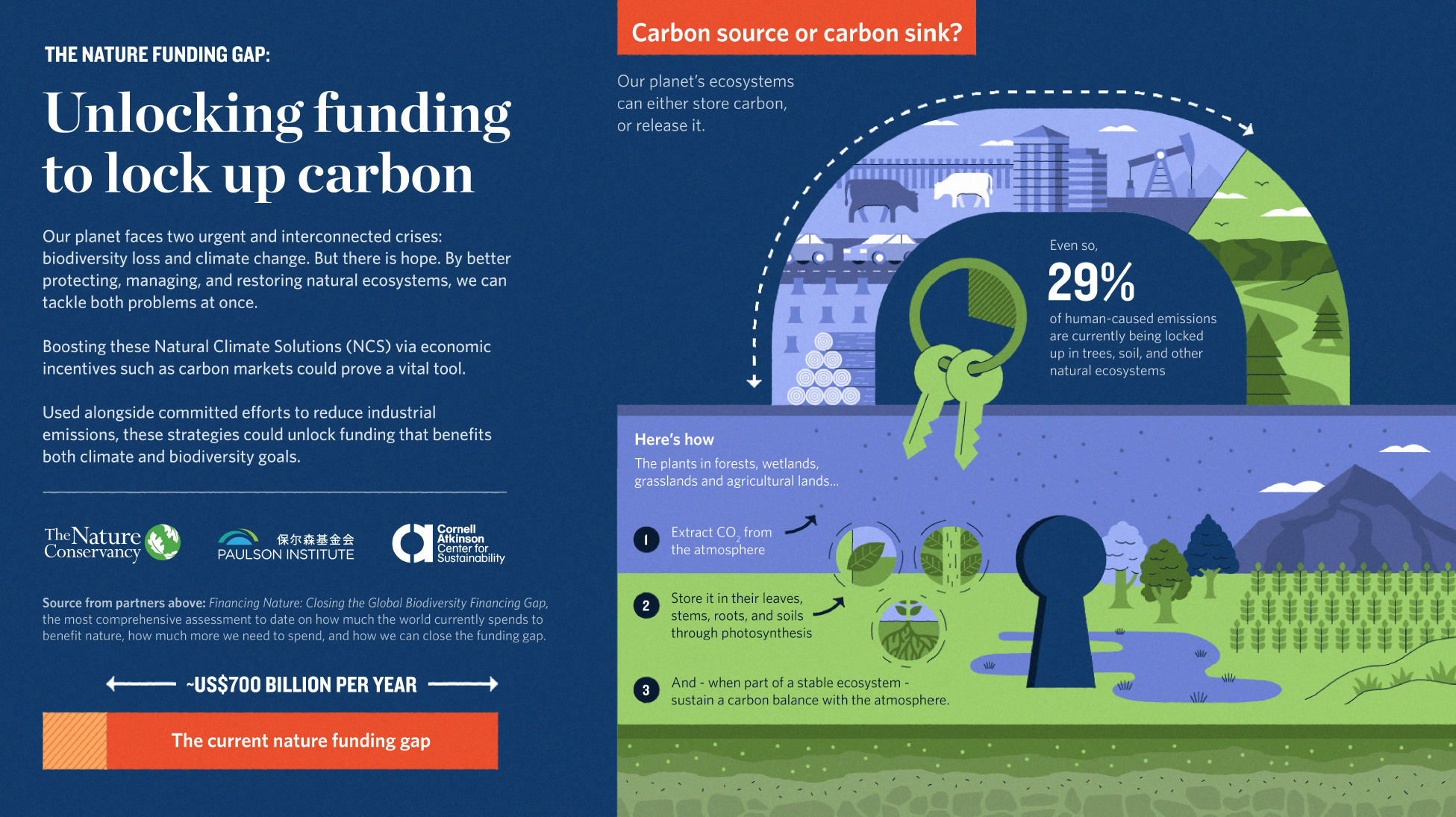
Infographic: Unlocking Funding to Lock Up Carbon
PDF
Our planet faces two urgent and interconnected crises: biodiversity loss and climate change. But there is hope. By better protecting, managing and restoring natural ecosystems, we can tackle both problems at once. More information
DOWNLOAD -
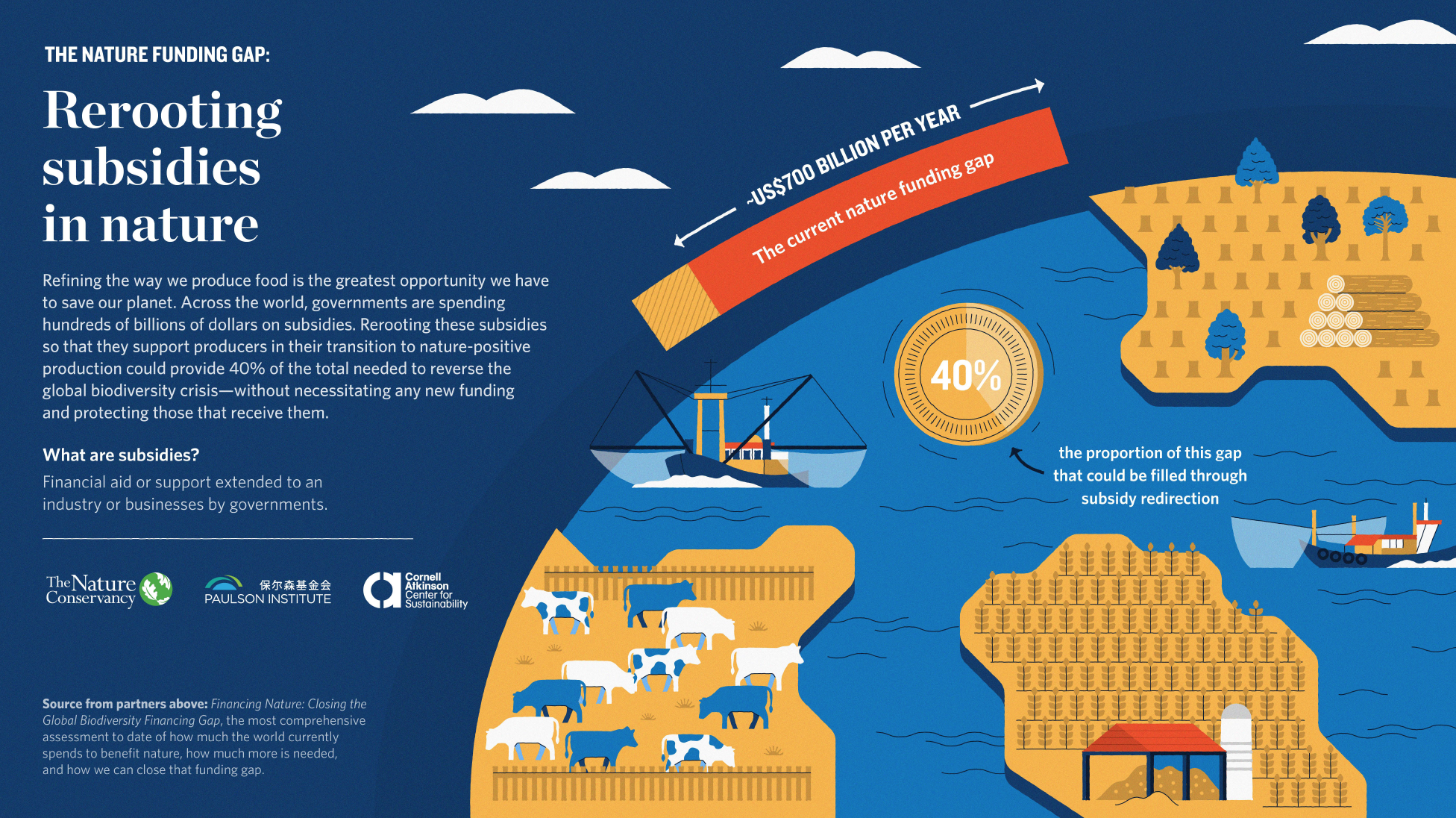
Infographic: Rerooting Subsidies in Nature
PDF
Refining the way we produce food is the greatest opportunity we have to save our planet. Across the world, governments are spending hundreds of billions of dollars on harmful subsidies. More information
DOWNLOAD -
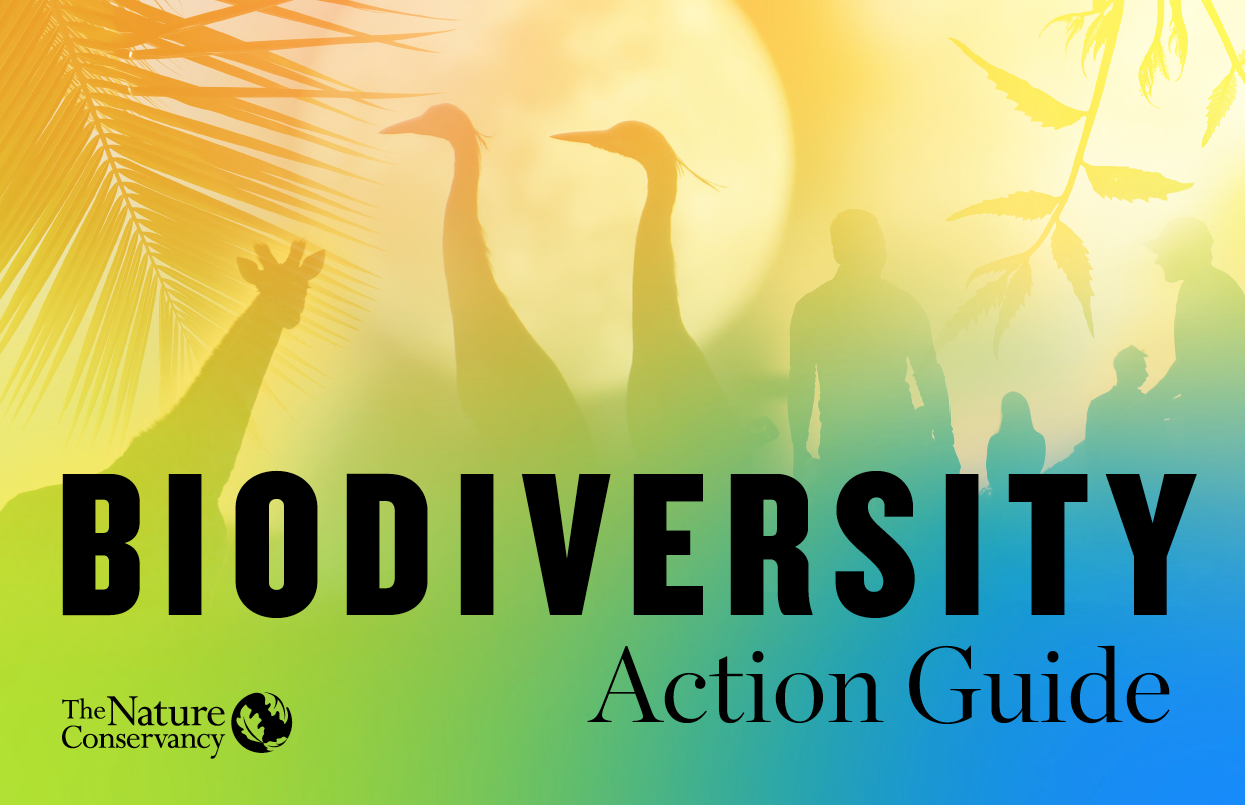
Resource: Biodiversity Action Guide
PDF
The Biodiversity Action Guide offers key strategies for increasing biodiversity conservation that are scalable—focused on protecting intact natural systems and inclusive of authentic community partnership. More information
DOWNLOAD -
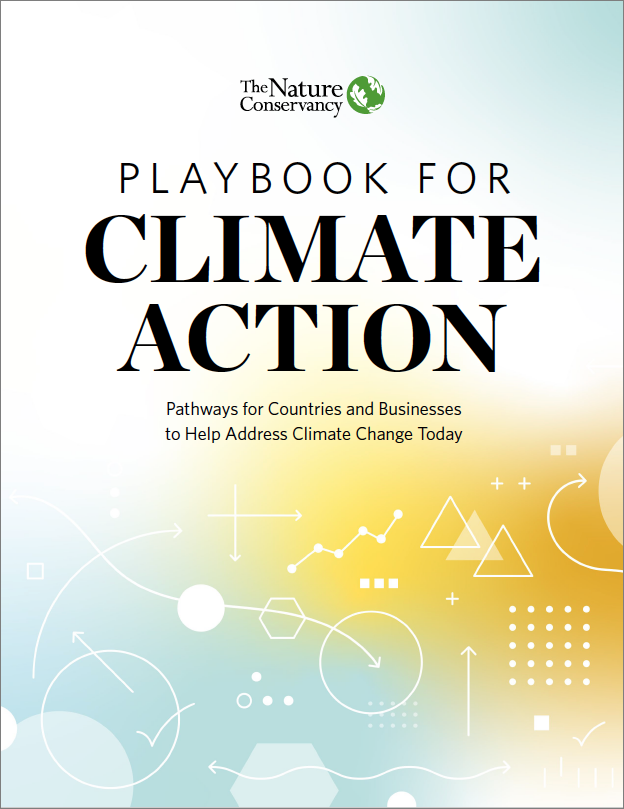
Resource: Playbook for Climate Action
PDF
The Playbook for Climate Action showcases five innovative pathways for reducing emissions and climate impacts. A comprehensive suite of science-based solutions, the playbook presents actions governments and companies can deploy—and scale—today. More information
DOWNLOAD
Policy, Finance, and Business Resources
-
TNC's Conservation Finance Recommendations
PDF
Funding Nature, Slowing Climate Change, Securing our Future. More information
DOWNLOAD -
Nature-Related Conversation in 2020-2021
PDF
This new social media analysis from Onalytica and TNC reveals how public understanding remains low on the importance of nature to human health and economic stability. More information
DOWNLOAD -
Building on Nature
PDF
This book outlines how area-based conservation can be a key tool for delivering SDGs.
DOWNLOAD -
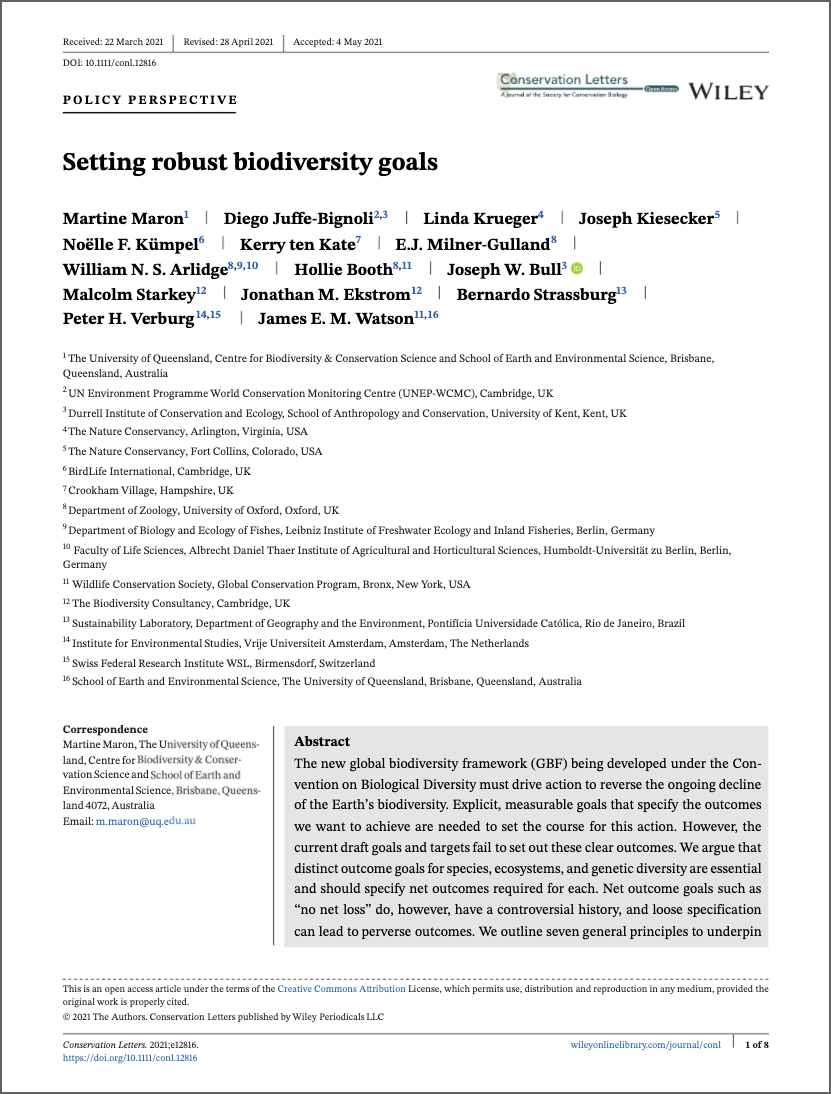
Setting Robust Biodiversity Goals
PDF
The new global biodiversity framework (GBF) being developed under the Convention on Biological Diversity must drive action to reverse the ongoing decline of the Earth's biodiversity. Explicit, measurable goals that specify the outcomes we want to achieve are needed to set the course for this action. Read more on Conservation Letters
DOWNLOAD -

A Nature-Positive World: Global Goal for Nature
PDF
No succinct goal exists for nature and the global agreements that address various dimensions of biodiversity. This paper lays out an argument for the adoption of a succinct Nature-Positive Global Goal for Nature. More information on Nature Positive
DOWNLOAD -
Infographic: Global Goal for Nature
JPG
This decade must be the turning point where we recognize the value of nature, place it on the path to recovery and transform our world to one where people, economies and nature thrive. More information on Nature Positive
DOWNLOAD -
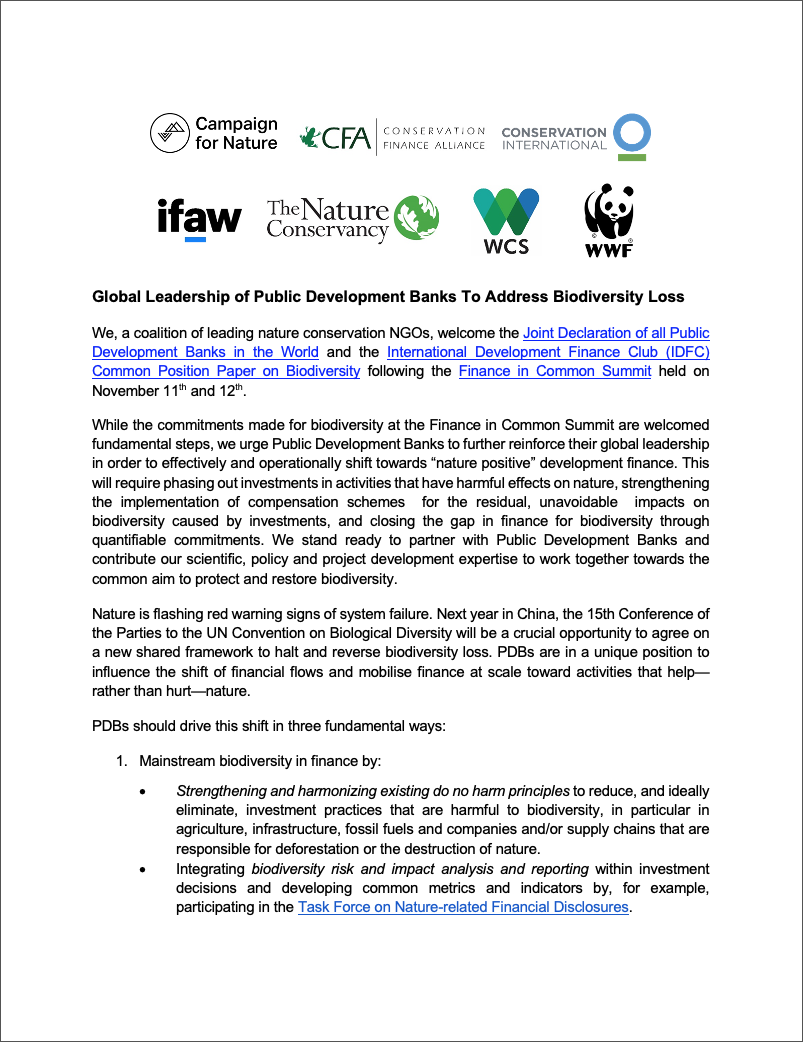
NGO Coalition Statement: Public Development Banks
TNC has joined efforts with other leading conservation organizations to identify three key opportunities for Public Development Banks to drive systemic change that addresses the biodiversity challenge. More information
DOWNLOAD -
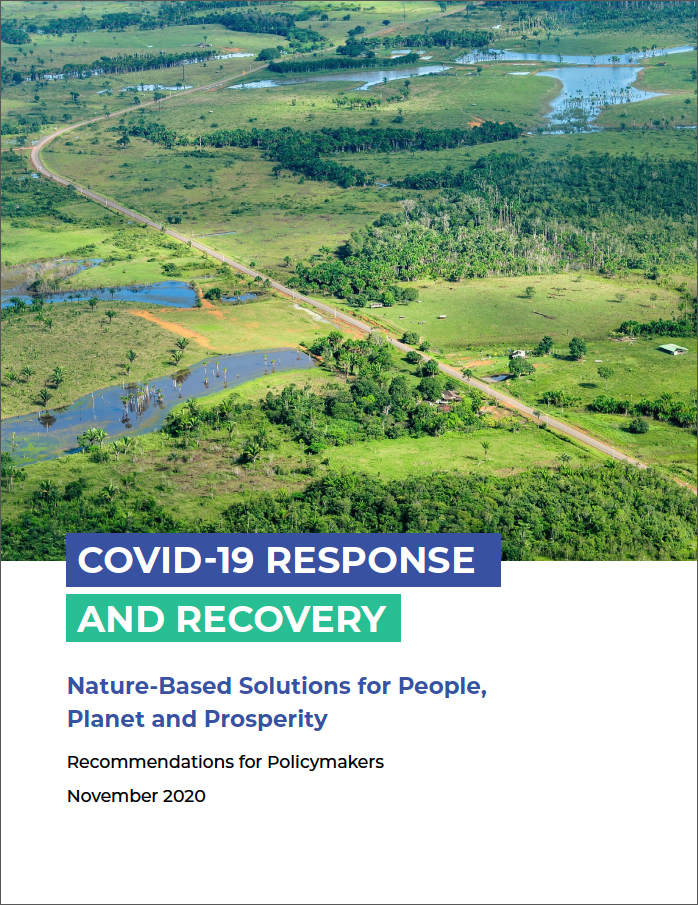
COVID-19 Response and Recovery
PDF
A joint NGO policy paper outlining recommendations for COVID-19 Response and Recovery through nature-based solutions
DOWNLOAD -
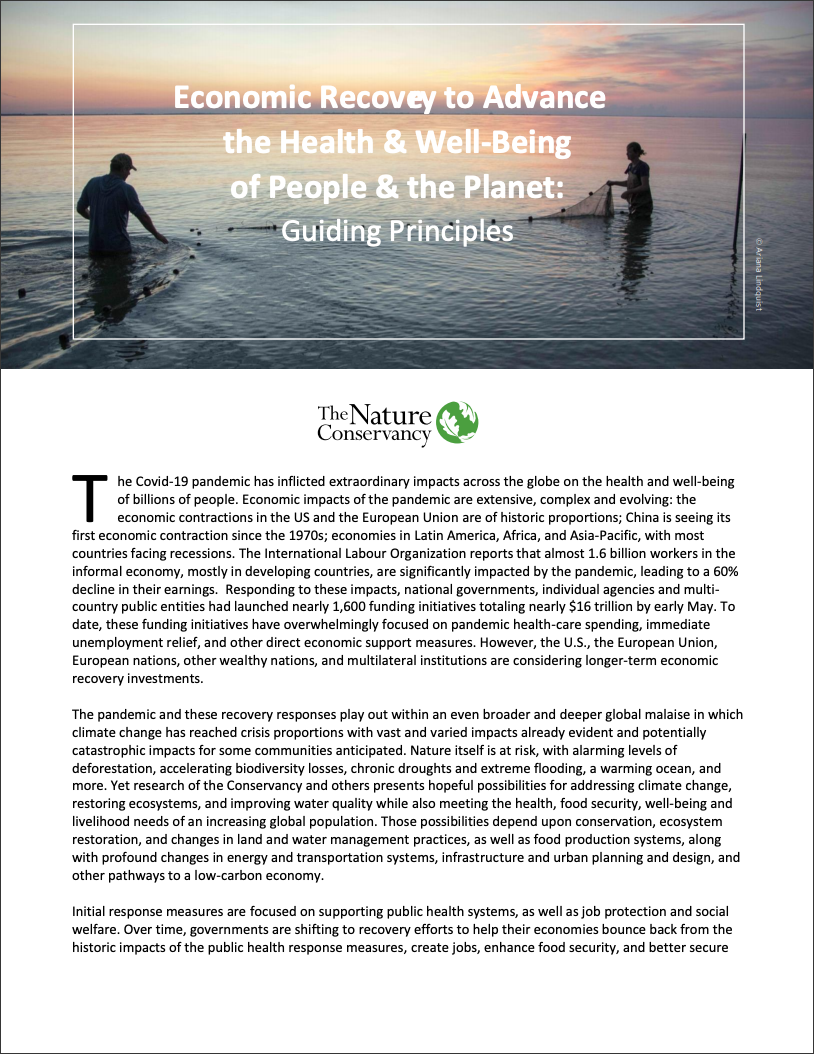
Economic Recovery Guiding Principles
PDF
The Nature Conservancy's guidance on an economic recovery to advance the health and well-being of people and the planet.
DOWNLOAD -
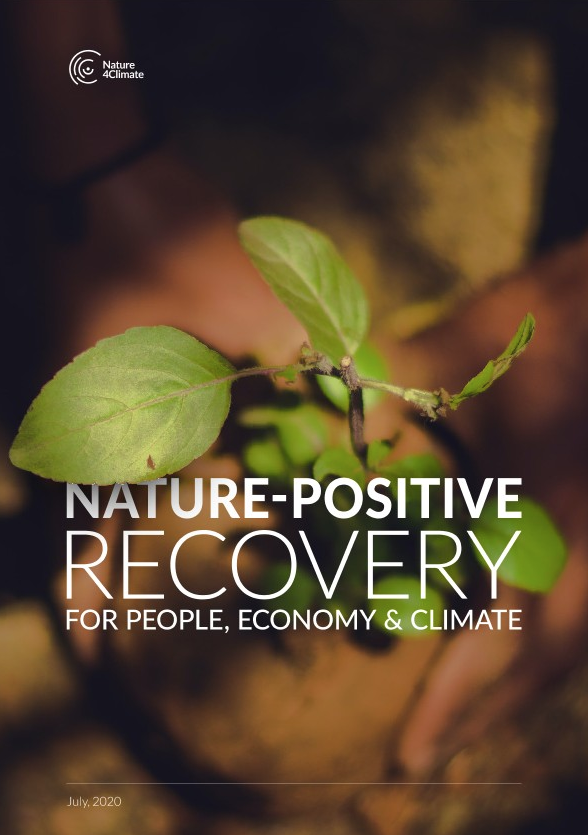
Nature-Positive Recovery
PDF
A nature-positive recovery for people, economy and climate includes principles for investing in nature-based jobs and initiatives to stimulate the post-COVID economy. Visit Nature4Climate's site
DOWNLOAD -
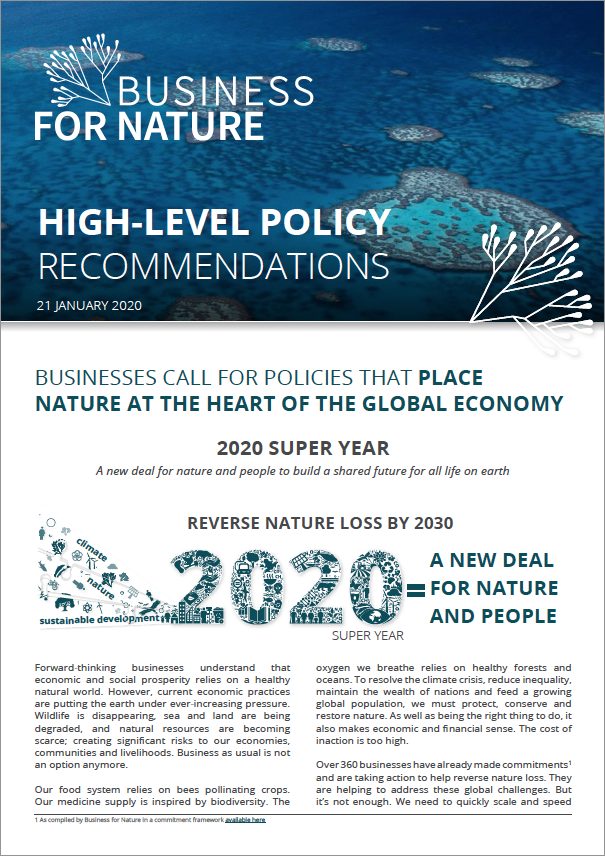
Businesses Call for Policy Action
PDF
TNC supports the Business for Nature coalition in accelerating policies to curb biodiversity loss. Download to read their statement. Visit Business for Nature
DOWNLOAD -
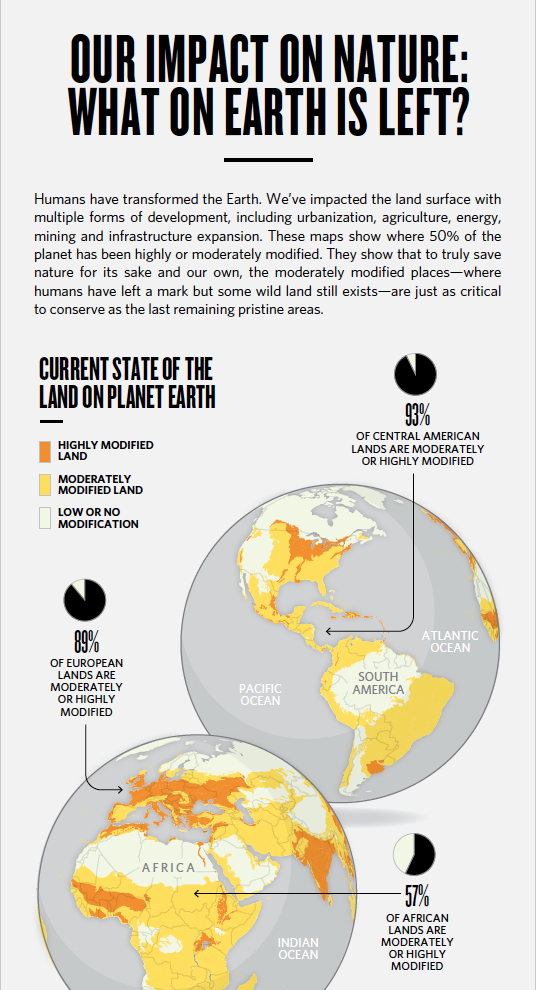
Infographics: Human Nature—Visualized
PDF
Download three infographics showing the current extent of land change on Earth, what future changes might look like, and what is driving these changes. More information
DOWNLOAD -
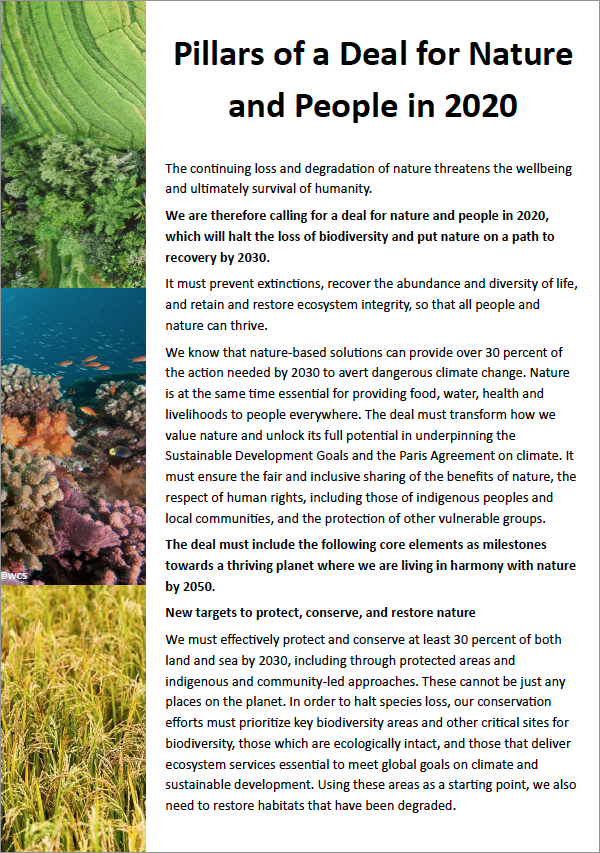
Global Insights
Check out our latest thinking and real-world solutions to some of the most complex challenges facing people and the planet today.






